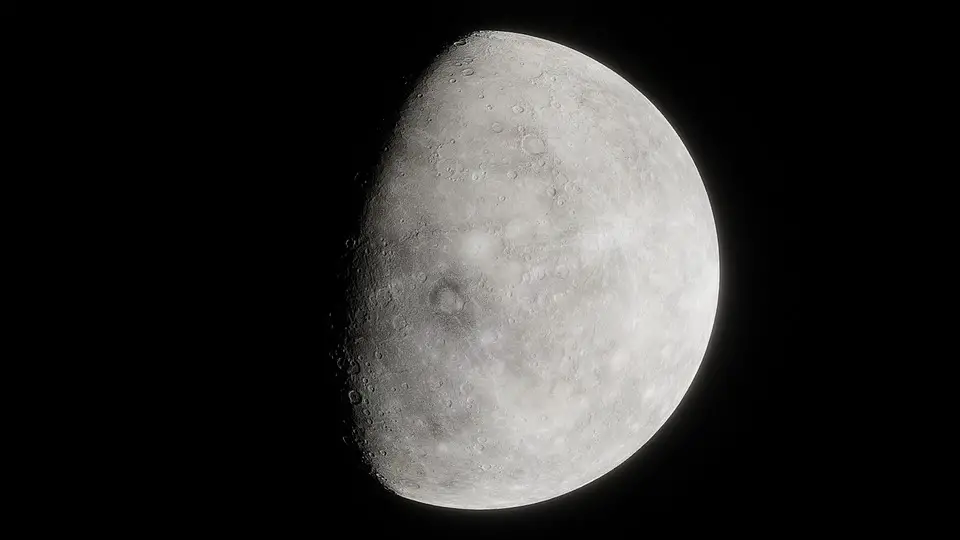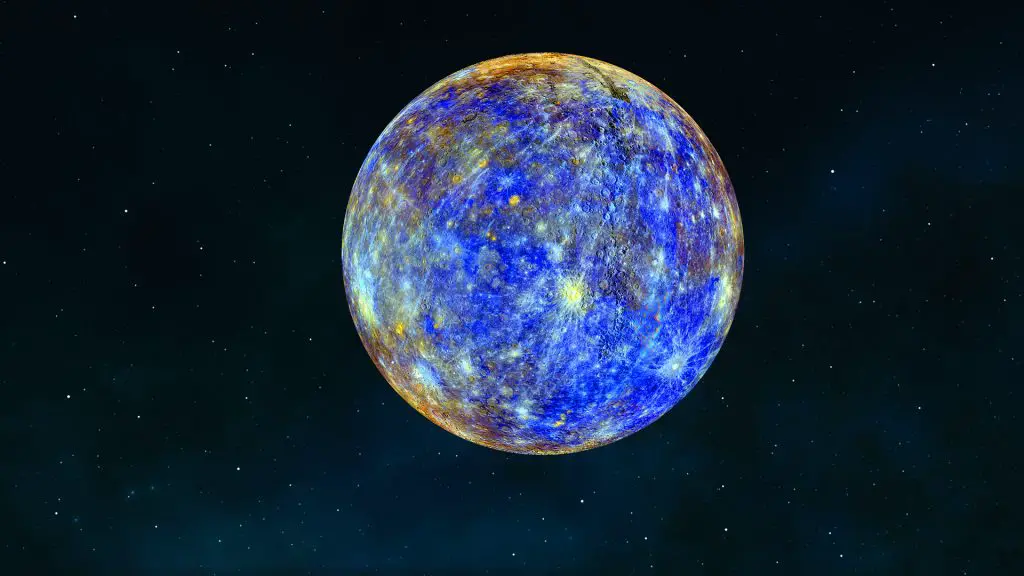After NASA Galileo space probe closely observed Europa in 1997, scientists used the data from this observation to learn about the possibilities of life on Jupiter’s Icy moon.
But what exactly did Galileo’s probe discover about Europa? What makes scientists think about the possibilities of life on Europa? Are there future space missions to confirm the existence of extraterrestrial life on Europa? This article has answers to these questions and more.
How Europa Was Discovered
Europa is one of the most fascinating celestial bodies that has remained out of our reach for centuries. Despite orbiting around the largest planet in the solar system, Europa has hidden from our ancient astronomers observing the night sky without any technology.
On January 8, 1610, Astronomer Galileo Galilei used his newly built 20×-magnification refracting telescope to discover Europa and three other Jupiter’s large moons, including Ganymede, Io, and Callisto. After making this discovery at the University of Padua, Galileo struggled to differentiate Io from Europa because of the poor magnification of his telescope. But future observations enabled him to state the difference clearly. Simon Marius, a German Astronomer also observed the moon independently before suggesting that it should be named Europa, after the Phoenician mother of King Minos of Crete and lover of Zeus. The astronomical community deliberated on this name before it was later concluded to be addressed as Jupiter II or Europa.
How Technological Progress Enabled Us To Unveil More Mysteries About Europa
After Galileo Galilei discovered Europa in 1610, astronomers became more fascinated with learning about the moon. However, slow progress in technological advancement limited ancient astronomers from taking a closer look at the icy moon. But technological progress enabled astronomers to learn that Europa is the smallest of all four Galilean moons orbiting around Jupiter.
Other fascinating facts about the gas giant’s icy moon were also discovered before we began to build sophisticated space technologies to observe the moon closely. When the space race began in the mid-20th century, NASA was devoted to exploring distanced planetary systems and their moons within the solar system.
In the 1970s, NASA sent the Pioneer 10 and 11 spacecraft to explore the Jovian system. These space probes accomplished their missions and captured the first distanced images of Europa. However, astronomers cannot rely on these distant images to conclude what is made up of the icy moon.
But NASA began to think of taking a closer observation of Europa. In 1979, Voyager 1 and 2 flew by Jupiter, capturing a more detailed image of Europa. These latest images from voyagers 1 and 2 revealed several fascinating facts about Europa, including its icy surface and many others. This discovery made scientists believe that Europa may have liquid water beneath its icy surface. However, Galileo’s Orbital spacecraft gave us a more detailed view of Jupiter’s Icy moon.
How Galileo Space Probe Improve Our Knowledge About Europa
On 18 October 1989, Galileo’s spacecraft was launched from the John F. Kennedy Space Center to study the Jovial System. The orbiter arrived in the Jovial system in 1995 and commenced its mission to study Jupiter and its mysterious moons. The Galileo Orbiter spacecraft studied Jupiter from 1995 to 2003.
During this mission, the space probe made about a dozen flyby on Europa and discovered almost everything we know about the moon today. Some of its discoveries include a magnetic field created by Europa. However, when the orbiter concludes another flyby, it realizes that the magnetic field has adjusted from its previous position.
Since we knew that Magnetic fields don’t change so quickly, scientists marveled at this discovery. However, it was later discovered that Europa sometimes behaves like a conductor. Scientists believed that the deep layers of electrically conducting fluids located in the shallow subsurface area of Europa, which lies beneath the crust but above the mantle and core, may have caused the special magnetic field to be created on the Icy moon.
The spacecraft also enabled scientists to discover the presence of salty water on Europa. The existence of salty liquid water lies beneath the crust of the icy moon. This implies that a subsurface ocean lies beneath the frozen surface of Europa.
The spacecraft also passed through a plume of water-rich minerals erupting from the subsurface oceans of Europa. These discoveries made by Galileo’s spacecraft made scientists plan more sophisticated future space missions to explore the icy moon’s surface.
After completing its mission, the Galileo spacecraft plunged into Jupiter’s atmosphere in September 2003. NASA did this to prevent the spacecraft from colliding with Europa.
How Hubble Space Telescope Observed Europa
The launching of NASA’s Hubble Space Telescope (HST) in 1991 became a game changer in the scientific observation of Europa. On June 2nd, 1994, a team of researchers at the Space Telescope Science Institute in Baltimore and the Johns Hopkins University also in Baltimore made an observation on Europa using HST’s Goddard High-Resolution Spectrograph (GHRS) instrument.
The observation lasted for six Hubble orbits, and the GHRS detected the spectral signature of oxygen molecules on Europa’s atmosphere in ultraviolet light. This discovery enabled scientists to know that the moon has an extremely weak atmosphere of molecular oxygen around it.
The researchers documented it in the issue of the Journal Nature in 1995. Doyle Hall, who served as the principal investigator of this research, was fascinated with this discovery.
He stated in a report, “Europa’s oxygen atmosphere is so tenuous that its surface pressure is barely one hundred billionths that of the Earth. It is truly amazing that the Hubble Space Telescope can detect such a wispy gas so far away.”
However, the scientists that made this discovery clearly stated that this observation is not evidence of life on Europa, as the moon’s surface is extremely cold to sustain any life form known to humans. Specifically, the surface temperature of Europa is measured at -230 degrees Fahrenheit (-145 degrees Celsius). Since the moon receives a little percentage of sunlight that reaches earth, its surface is almost completely frozen.
In 2016, Hubble Space Telescope discovered evidence of more plumes of water-rich minerals erupting at Europa’s the South Pole. This discovery greatly supported Galileo’s discovery of the evidence of a subsurface ocean on Europa.
The existence of a subsurface ocean has triggered our interest in studying the moon and uncovering more mysteries about its potential to support life. Aside from Europa, many satellites like Titan, Enceladus, and others have been discovered to have subsurface water. But what made Europa stand out from the rest is its salty water, just like our oceans.
But unlike Earth’s oceans, which lie at the surface, Europa’s ocean lies beneath a thick frozen surface. Scientists estimated the frozen shell that covers Europa’s ocean to be about 15 to 25 kilometers thick. Scientists also estimated that the depth of the liquid water on the Icy moon could be up to 60 to 150 kilometers deep.
By this estimation, the liquid water may be deeper than the entire ocean combined. Astronomers estimate that the ocean covers the entire subsurface region of Europa. This implies that the icy moon may have more salt water than earth.
What is the Source of Heat in Europa?
For Europa to retain liquid water beneath its frozen surface, there must be some heat source reaching the moon. Keep in mind that the average distance from Europa to the sun is about 485 million miles. At this great distance, only a small percentage of the sunlight will reach the moon’s surface. Hence, the heat source is in no way coming from the moon. Scientists developed two concepts to determine where the actual heat source comes from.
The first concept assumes that Europa may have some level of radioactive decay in its core, which helps heat the moon’s inside and keeps its ocean in a liquid state. Scientists even think this radioactive decay may have contributed to the volcanic activities of the water plumes erupting from the moon’s surface. However, if Europa does not have a source of heat from its interior, the icy moon may look toward its host planet, Jupiter, for a heat source. This is where the second concept comes into play.
On second thought, scientists think that Jupiter’s influence may have kept the moon’s subsurface warm using its radiation powers. Jupiter has more gases, and radiations than other planets and moons in the solar system joined together. Because of its powers, Jupiter kept its satellites together and makes them follow circular orbits around its gigantic structure.
Europa and the two other closest moons to Jupiter (Io and Ganymede) are made to follow an orbital resonance around the gas giant. The orbital resonance movement allows the planets to align in some cases. But unlike other jovial moons around Jupiter, Europa is tidally locked, making it rotate as fast as it moves.
Europa takes about three and half days to complete an orbit around Jupiter. As the gravity from Jupiter changes, the moon moves closer and farther away from Jupiter. As Europa gets closer to Jupiter, it stretches out more because of Jupiter’s powers. But as it distances itself from the gas giant, Europa contrasts.
This stretch and contrast are one of the reasons why fractures can be seen on Europa’s icy surface. The effect of Jupiter on Europa makes the moon experience tidal flexing. Tidal flexing is a process whereby Jupiter pulls the surface and the interior of Europa hard, thereby flexing the moon’s icy crust by 30 meters. This process helps in generating heat beneath Europa’s icy surface.
Scientists assume that the heat generated during the process of tidal flexing is much more powerful than the heat any radioactive decay can produce. Scientists assume that this heat source is what keeps the subsurface region of Europa Warm.
Is there any Evidence of Life in Europa?
Since you have learned about the primary source of heat and the evidence of liquid water on Europa, you may begin to wonder if life actually exists on the icy moon. Based on our telescopic and robotic orbital exploration of the icy moon, scientists think that Europa has hydrogen, sulfur, oxygen, nitrogen, and phosphorus, which are common chemical ingredients for life.
Scientists also believed that Europa was formed following the same procedure as other celestial bodies. During this process, Asteroids or Comets that impacted the moon might have deposited carbon-containing organic materials for life.
The existence of liquid water beneath the icy moon of Europa shows that the moon may have evidence of life, even if the living organisms exist on a microscopic level. Currently, we are yet to discover evidence of life on Europa. But future space missions to the icy moon will enable us to conclude the existence of extraterritorial life outside earth.
What are Future Space Missions to Europa?
NASA is planning a space mission to unveil more facts about Europa. The space agency named this robotic orbital spacecraft Europa Clipper, and it will be launched in 2024 to arrive at the Jovian system in 2030. Once the spacecraft reaches its destination, it will unveil more facts and help us find evidence of life on the moon.
The European Space Agency (ESA) is also working on launching a spacecraft named Jupiter Icy Moon Explorer (JUICE) to study Ganymede in 2023. The European Space Agency also planned to conduct two flybys on Europa using its JUICE spacecraft. JUICE Spacecraft and Europa Clipper will uncover many hidden facts about the moon in the next decade.
Conclusion
Thank you for staying put to the end of this article. Europa has remained one of the most fascinating satellites that have captured our interest since we began to unveil its mysteries. Future space missions to Europa will uncover more mysteries about the moon. What do you think about Europa?




